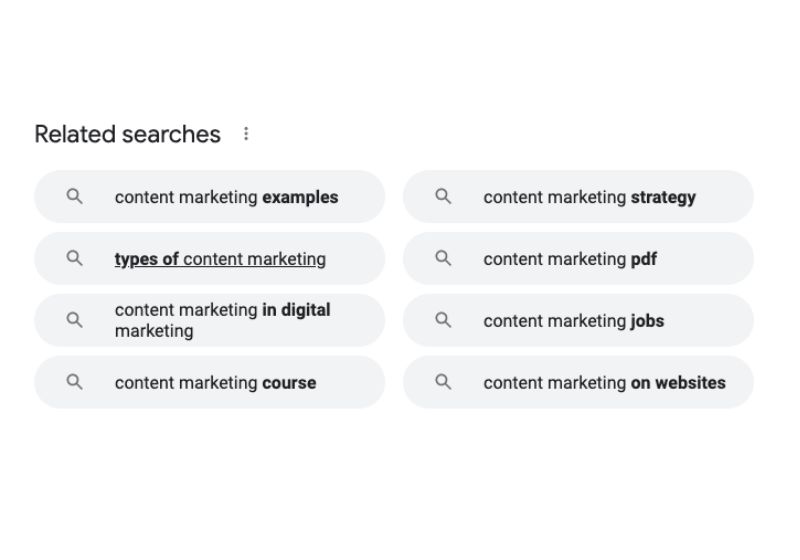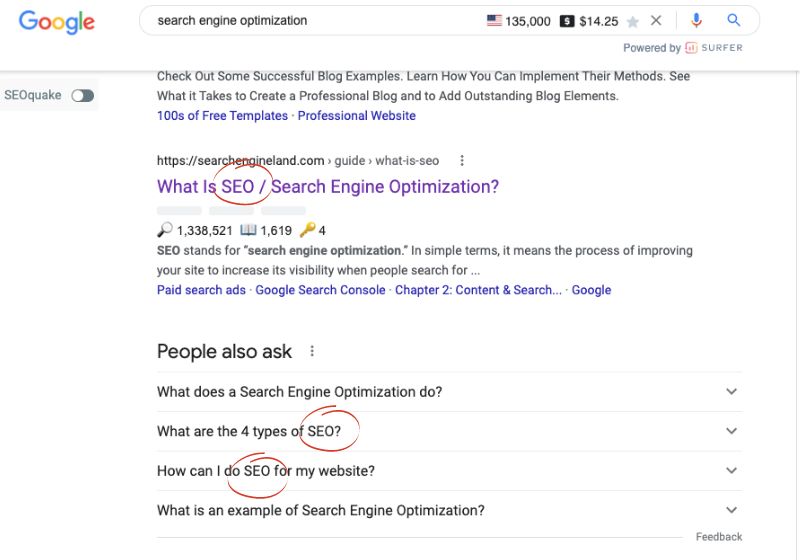Secondary keywords are an important part of SEO success. Secondary keywords are the words and phrases you target after your main or target keyword(s).
Secondary keywords help you to expand your reach and attract more traffic to your website.
This blog post will discuss secondary keywords and how to find them. We will also provide a list of helpful tools that you can use to make the process easier!
Related: LSI Keywords 101| What Are LSI Keywords
How to Find Secondary Keywords for SEO Success
Your keyword research is a crucial component of SEO. It’s the job of determining and researching keywords and phrases that people use in search engines when searching for your site’s content.
Choosing the most relevant and popular keywords to include in your content will improve your content’s chances of ranking in search engines.
There have been a few concerns regarding keyword relevance recently, but they are still an essential and beneficial part of SEO strategy. They aid Google in determining what your website is all about, boost traffic and conversions, and offer useful information on current trends.
However, most people finish with primary keyword research. If you go deeper with your research and include secondary keywords, you’ll be giving more contextual information about your main keywords and could begin to see results faster.
What Are Secondary Keywords and How Do They Work?
First, let us define primary keywords. These are the major keywords that most aptly describe your business.
For example, a primary keyword might be “bike.”
Secondary keywords provide additional information to your primary keywords and are frequently more related to searcher intent.
Consider researching secondary keywords such as “off-road,” “all-terrain,” “lightweight,” and “mountain” linked to your main keyword, “bike.”
Many secondary keyword searches result in search results that don’t contain the actual word but rather pull data from broader primary head terms.
What are Secondary Keywords?
Secondary keywords are any terms closely associated with the main search term you’re hoping to attract visitors to your site. Secondary keywords include all synonyms, subtopics, and long-tail keyword variances.
When you include these associated keywords in a page’s subheaders and body text, you’re covering all of a topic’s major areas and allowing Google to understand your site better.
What Are Primary and Secondary Keywords in SEO
Secondary keywords provide additional data to search engines while not the most essential SEO element.
Here are the ways Secondary keywords may help to strengthen your primary keywords and support your SEO:
Secondary Keywords Helps You Fully Satisfy Customer Expectations.
Keeping secondary keywords in mind allows content producers to fully address a subject and satisfy the expectations of their consumers.
Secondary Keywords Make Your Post Rank for More than One Keyword
Furthermore, when your page is live and indexed, these secondary keywords improve the likelihood of ranking for hundreds or perhaps thousands of distinct phrases, not just the initial one.
Secondary Keywords add context.
The most significant advantage of secondary keywords is that they provide additional context to your material. Google constantly scans content for clues about its surrounding environment to provide the most relevant results to each search query.
So, by adding some context-specific secondary keywords, you’ll be providing Google with more information about your content than your primary keywords will allow. As a result, it’s more likely to rank higher in search engines and be discovered by the appropriate people.
Secondary Keywords Can Help You Rank Faster.
Because your secondary keywords provide more context to Google, it’s more likely that Google will be able to get your material in front of the right people faster.
Because Google scans the content daily or weekly, depending on how authoritative your website is, this is true. And the more hints it has about your content, the quicker it can rank it in the search.
How To Find Secondary Keywords
To begin your secondary keyword research, you must first know where to look for them and the tools that can assist you.
There is a little guessing necessary to find your secondary keywords. But there are a few methods and tools that may help you:
Google Autocomplete

When you put a query into Google’s search bar, Google autocompletes the request based on the most popular terms real people used in that area.
So, reverse it and input one of your primary keywords to see what Google autocomplete suggests.
For example, if your business is a hotel, Enter “hotel” into Google and see which secondary terms appear in the autocomplete.
A potential secondary keyword might be a location, “reviews,” or “near me,” which would be a secondary keyword.
People Also Search For & Related Searches

When you search on Google, there is a box at the bottom that indicates “people also searched for.”
So, whether it’s Google Autocomplete or “people also searched for,” take some of these associated keywords. After all, since these are actual searches people make, they’re likely to be the words your customers would use to find your site.
To discover what shows up, type in numerous primary keywords or combinations. It should get you off to a good start for your secondary keyword research.
Synonyms & Semantics: LSI Keywords

When employing Autocomplete and “people also searched for” methods, keep an eye out for alternative ways to express the term you’ve input.
For example, when you search for “Search Engine Optimization” or “SEO,” Google recognizes that you’re also searching for “SEO.” As a result, it returns results that include material about “Search Engine Optimisation” and “SEO,” since it understands they are synonymous.
Try using Google search results to expand your keywords to include acronyms, similar phrases, or semantically close terms.
Read Also: LSI Keywords 101| What Are LSI Keywords
Google Keyword Planner
Another free alternative for doing secondary keyword research is Google Keyword Planner. As you would with the tool for primary keyword research, input the secondary keywords you wish to research.
Then, the Keyword Planner tool analyzes those terms’ effectiveness in the SEO sector. Finally, it indicates the average monthly search volume and how competitive that term is.
Low competition and high search volume are ideal for primary keywords.
But for secondary keywords, you want those closely associated with your primary keywords yet have a lower search volume.
So, if we want to search for secondary keywords to support your primary keyword: mountain bike, try entering “all-terrain” and “mountain bike” as separate keywords, and then click “Get results.”
They’ll also show you a list of ideas based on actually related searches, which is just as important:
Paid Keyword Research Tools
Plenty of paid tools help you better understand your keywords, just like there are with Google’s Keyword Planner.
SEMrush, Moz, and Ahrefs all provide you with data to assist you in deciding which keywords will receive the most traffic while being relatively low in competition if you input your keywords.
How to Use Secondary Keywords for SEO Success
Now that you’ve compiled a list of primary and secondary keywords, it’s time to figure out how to use them when creating content.
Stick to a maximum of five secondary keywords for your content.
Choose a maximum of five keywords to avoid keyword stuffing (the act of overfilling your content with keywords to the point that it appears clunky). You want to sprinkle them throughout your text rather than forcing them into every other sentence, much like your primary keywords.
Remember, quality is more important than quantity when it comes to keywords.
Google knows when you’re keyword stuffing, so ensure your primary and secondary keywords are together to give the right information for your user’s intent.
Use each secondary keyword at least once.
Make a list of your chosen keywords and include them at least once (if not more) in your content.
After that, click CTR+F to check for your secondary keywords in your content.
Secondary and primary keywords may overlap.
It may be tough to produce natural-sounding content if you attempt to include both primary and secondary keywords in your post. However, you can accomplish two things simultaneously by overlapping your primary and secondary words.
So, for example, if your primary keyword is “London restaurant” and your secondary keyword is “Italian,” you could combine them to form “Italian London Restaurant.” This way, by utilizing your secondary keyword, you’ve also utilized your main one.
Add internal links to include both primary and secondary keywords.
Now that you’ve completed the content and included both your primary and secondary keywords, it’s time to go live. Consider adding internal links to strengthen those primary and secondary keyword signals before going live.
Examine a page on your website or a recent blog article related to the new material you’ve created.
- First, link your new page utilizing the main keyword as the text in the link.
- Next, create another link from another page using your secondary keyword.
Each of your links indicates to Google that both your primary and secondary keywords are relevant: extra SEO power for your new material!
Conclusion
One Common SEO Mistake is neglecting secondary keyword research. While it isn’t essential to your SEO plan, it will impact your search rankings.
However, while keywords are important, they shouldn’t be overvalued.
What matters most when it comes to creating content is quality and relevance. After all, your content exists to provide helpful, shareable, and authoritative information to your customers. And no amount of keywords will determine whether or not they read it or enjoy it.
I believe that a comprehensive SEO strategy is the best approach to increase the chances of your content ranking, including some minor keyword research. However, your main focus should always be producing content that addresses your target audience.




Comments